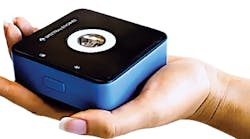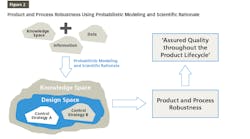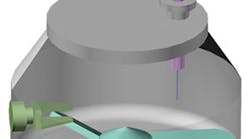Operational trends such as process analytical technology (PAT), QbD, and, to a lesser extent, continuous manufacturing (CM), have gotten a strong foothold in the pharma world. But for PAT, there is still much to be learned to better control the process, including the physical characteristics.
Although a typical PAT step could be paraphrased as “blend until blended,” having better control of parameters, such as particle size, helps. For example, excessive differences in average particle sizes between materials might keep a batch from being sufficiently homogeneous.
Here are some of the newer products that help pharma manufacturers by enabling them to greatly increase data point gathering, providing information on the process, and simplifying control.
Getting a Read on Physical Parameters
Under cGMP (batch manufacturing), the compendial tests for incoming raw materials (API and excipients) were considered “good enough” for purity and identification. However, QbD and CM have changed the game and have fueled the need for a tighter control of physical parameters.
This year at IFPAC (Cortona, Italy), Redstart Instrumentation displayed its non-contact particle sizing instrument, Swift. It uses machine vision components and was initially designed to image pellets during coating at a speed of up to 100 fps. It has telecentric optics and is small/lightweight (allowing portability between process units). The inserted Swift system can also monitor 1,000,000 pellets/min, while the portable system can measure 500,000/min. A single measurement can image 2.2 μm and average values below 1.0 μm. The critical quality attributes measured are size, shape, average coating thickness, and coating uniformity.
The SOPAT probe, made by Malvern Pananalytical, also helps manufacturers to monitor and control particle sizes. Similar in form to the Swift, the SOPAT is an image-based, photo-optical tool, capable of analyzing particles in multiphase systems (e.g., slurries). It also analyzes shape and size distribution, in-line, of bubbles, droplets, solids, biological cells or crystals. The major difference is that the instrument may be equipped with multiple heads, allowing multiple processes to be monitored or more inspection points on a non-homogeneous process.
Rapid ID and Content Uniformity
With faster, smaller, and (hopefully) less expensive monitors available, there is ever more incentive to monitor all parts of a pharmaceutical production line. Two smaller units worth noting are the NeoSpecta, made by SiWare, and the NIRONE made by Spectral Engines. Both are MEMS-based (microelectromechanical systems), using small Fabry-Perot interferometers and are small, rugged, and relatively inexpensive. Previously, they were often in larger packages and also came with a hefty price tag.
Each may be installed or used as hand-held instruments and both companies supply various wavelength ranges (MEMS units do not have the range of, say, gratings): 900-1400nm, 1700-2400nm, etc. They may be used for raw materials qualification, checking/analyzing powder blends (some work would be needed to convert to a blend uniformity device), and examining tablets and capsules in blister packs (for clinical supplies, for example). The contribution of these two are their size and speed, as well as spectra generated, which is nearly as good as a lab-based instrument that costs many times more.
Final Dosage Forms
Lab-based and near-line NIR units have existed for analyzing final dosage forms for decades. As early as 1996, Pfizer began using grating-based lab models, located in a control room next to the tablet line, analyzing up to 20 tablets per hour/line, getting an ongoing picture of the quality of the run.
Two useful tools for real-time monitoring tablets and capsules are based on “push-broom” technology (developed at VTT in Finland). Simply stated, this approach is an imaging technology that is kinetic, not static, so either the unit or the sample must move to cover the full sample. This is ideal for tablets coming off a tableting machine or a moving belt of blister packs.
Specim recently upgraded its Specim FX17, a hyperspectral NIR imaging camera. The unit is ideal for blister packs, capable of showing that each position has a tablet/capsule and that it is the intended product (good for QA and clinical surety). Clinical supplies are “double-blinded,” so as to not bias the study, the packs given to various patients are not the same, yet appear so. Usually several are sacrificed for assay and the rest assumed correct, but this new technology offers 100 percent analysis of clinical supplies.
The Hy-ternity, produced by Indatech, is another NIR imaging instrument based on push-broom. Employing fiber optic probes, the technology is more flexible in being able to measure dosages coming off the press at any point. With fiber probes placed on several lines of freshly produced tablets or capsules, up to 100,000 units/hour/line may be qualified and analyzed. The units allow the operator to see the CU/capsule fill percent, hardness, and some other parameters in real time.
Simply stated, many more pieces of (good) data at a reasonable price and speed allow production engineers to more tightly control the manufacturing process. This leads to both better and safer products for patients, and enhanced profitability for the company.
[javascriptSnippet]





